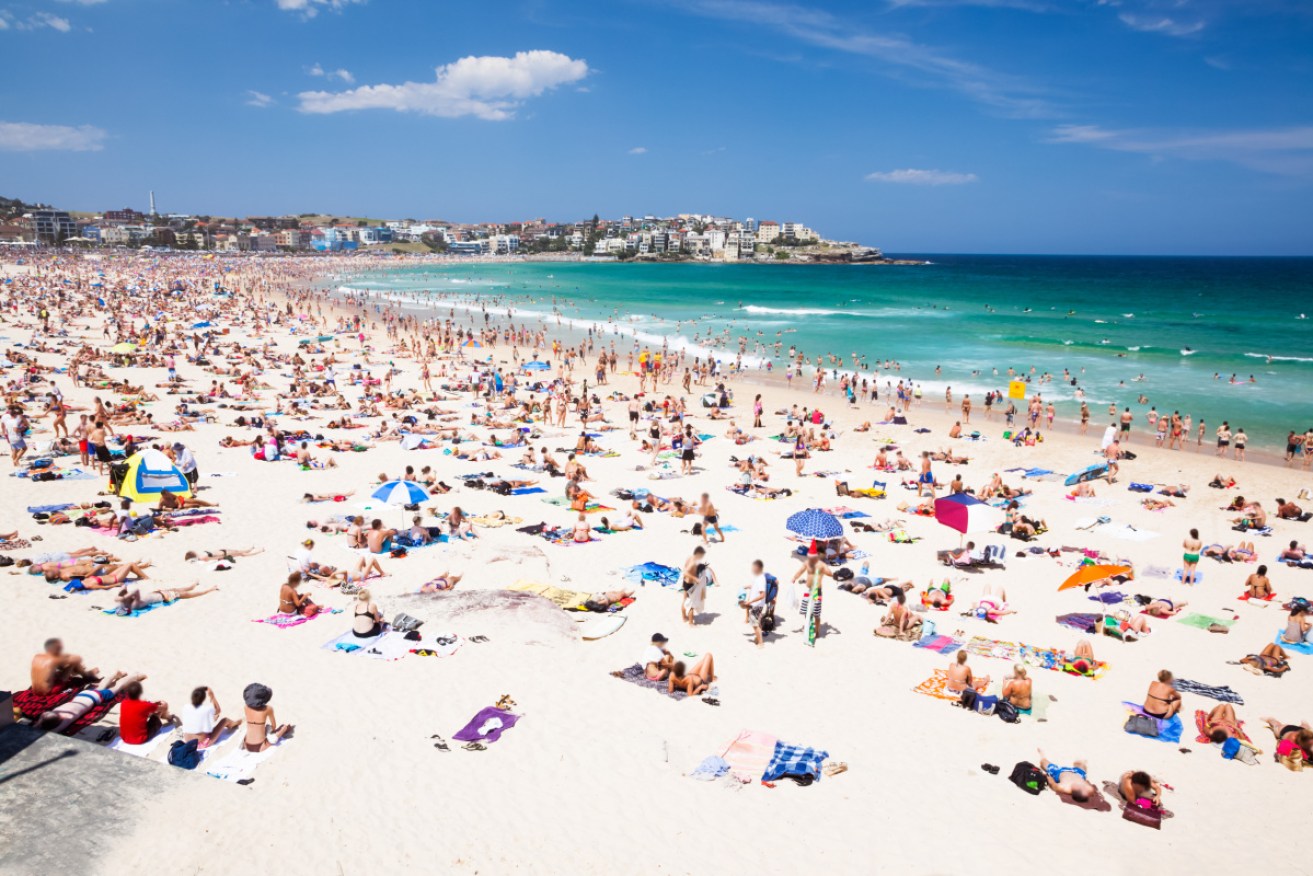COVID-19: The risk of outdoor transmission is small but real


Public spaces can be as crowded with virus particles as people. Photo: Getty
During Monday’s briefing, Victoria’s chief health officer Brett Sutton addressed the elephant in the room … or rather, in the stadium, on the beach and in the park.
The issue being: Outdoor transmission of the coronavirus.
This was the probable explanation for transmission of the virus at the MCG and at AAMI Stadium.
“AAMI is outdoor seating,” Professor Sutton said. “We have individuals who were not seated together and there was no evidence they have attended a food venue together either …
“When you have contact tracing that is identifying exactly where people have been but you know that they have been outdoors, then you are starting to pick up some of that outdoor transmission as well. It is much lower risk, but it happens.”
Professor Sutton said authorities would need to look at “how we help manage (the risk of outdoor transmission) as we kick off public events down the track”.
Not just droplets, but fine particles pose a threat
Outdoor transmission is finally becoming a topic of conversation among health authorities as a result of the focus on the Delta variant – a more contagious version of the virus but not a more severe one.
The reason why outdoor transmission has previously been off the radar is because it’s part of a broader, fundamental problem in how the spread of the virus has been commonly and wrongly understood and discussed – which brings us to the issue of aerosol transmission.
That is, the coronavirus is caught via the air we breathe – a matter of concern for scientists since near the beginning of the outbreak but one not tackled by public health and government authorities.
As Sydney epidemiologist Professor Raina MacIntyre wrote in a May Conversation article, the World Health Organisation and US Centres for Disease Control had only then “changed their guidance to acknowledge SARS-CoV-2, the virus that causes COVID-19, can be transmitted through the air we breathe”.
Australia is yet to officially do so – although Professor Sutton’s advice on Monday acknowledges the problem.
Why has the role of airborne transmission been denied for so long?
Professor MacIntyre says it’s “partly because expert groups that advise government have not included engineers, aerosol scientists, occupational hygienists and multidisciplinary environmental health experts”.
Droplets travel further than commonly believed
Professor MacIntyre says that most studies have found that large droplets containing the virus travel horizontally at a distance greater than two metres – which is further than what we’re meant to allow when social distancing.
She also notes “experimental studies show SARS-CoV-2 is as airborne as these other coronaviruses, if not more so, and can be found in the air 16 hours after being aerosolised”.
Which means that on a nice, calm day at the beach, or sitting undercover but essentially outdoors at the footy, there is a risk you will become infected by someone you have never seen.
So, how do we keep safe?
Thomas A. Russo is Professor and Chief, Infectious Disease, Jacobs School of Medicine and Biomedical Sciences, University at Buffalo.
In an October piece for The Conversation, Professor Russo advises: “If you think you’re safe from the coronavirus just because you’re outdoors, think again. While the wind and the large volume of air make the outdoors less risky than being indoors, circumstances matter”.
He said that someone who is infectious “can cough or sneeze, or just talk and, if you happen to inhale those respiratory droplets or they plop into your eye, you can get infected”.
He advises that, depending on where you are, “maximise the distance between yourself and others”.
In the US, people are advised to stay 1.8 metres (six feet) apart.
“There’s nothing magic about staying six feet apart. Particles generated by sneezes can travel a lot farther than that. Twelve or 15 feet is safer,” he writes.
This means we should be keeping about four metres from other people.
“It’s all about minimising risk,” he writes. “You can never drive that risk to zero when you’re in public.”
The professor’s advice is the same that The New Daily gave our readers last week: Carry a mask with you. If the street is empty, then you can probably safely keep it in your pocket. But when you see people up ahead, or gathered together in a park or at a sporting event, then put it on.
Final note: Don’t wait for the government to tell you it’s mask time. Make it your own responsibility.








